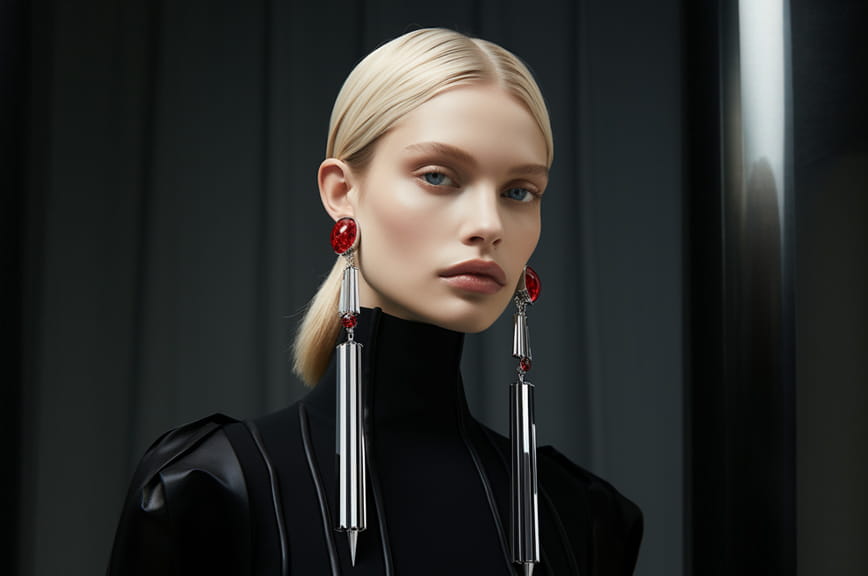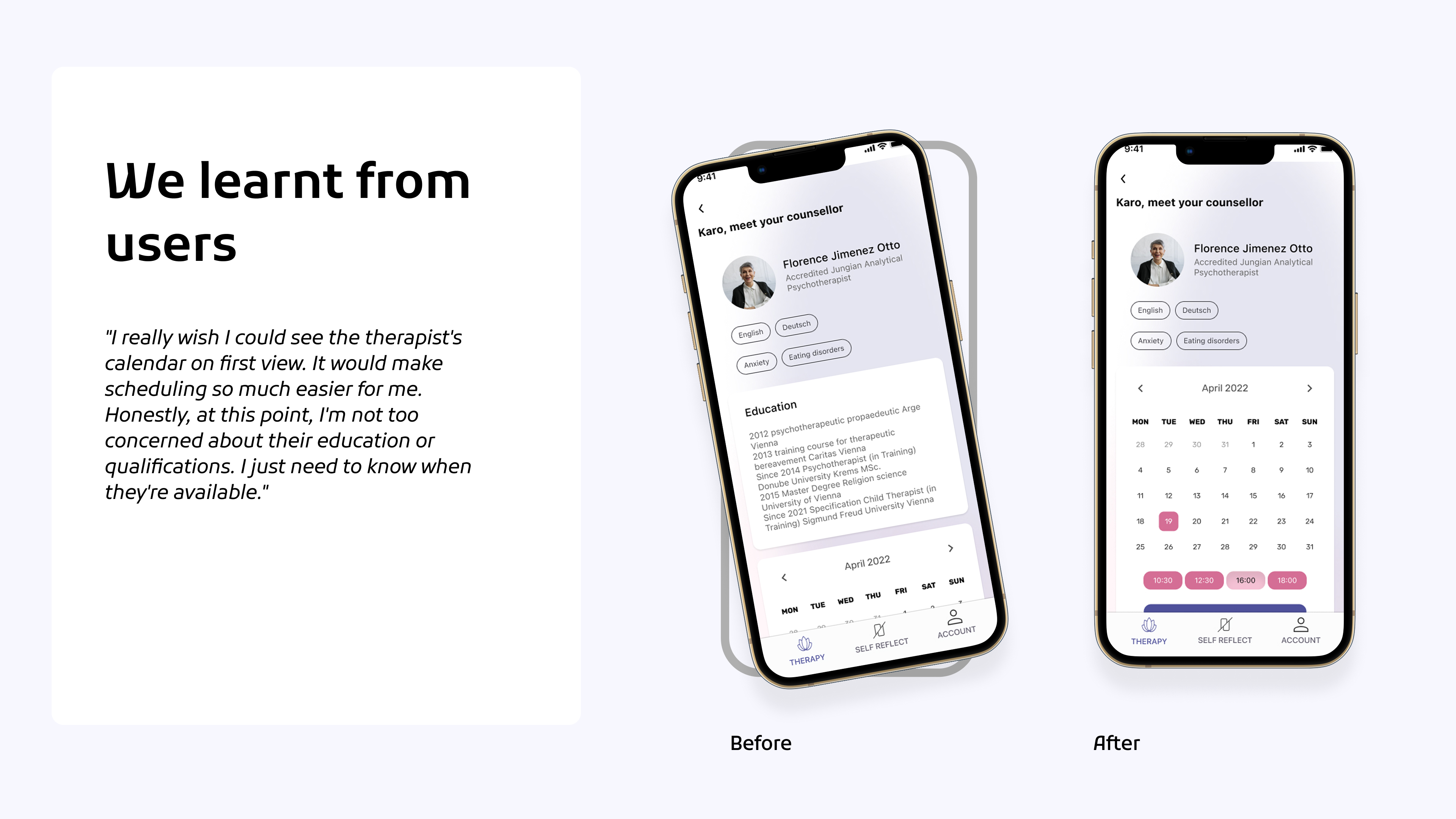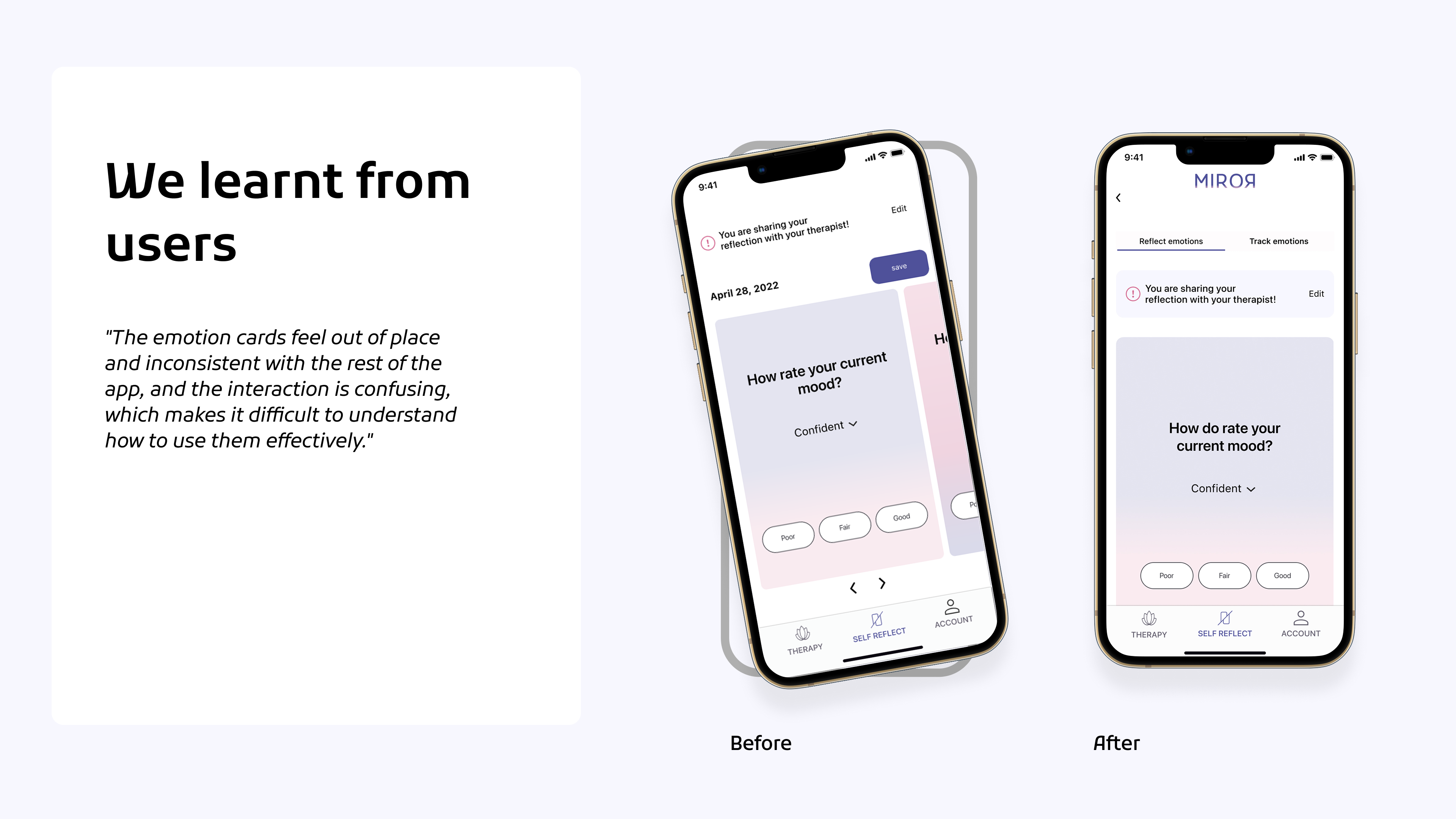Introduction
Miror is an end-to-end application in which people can find and connect to therapists based on their needs.
As mental health continues to be a pressing issue worldwide, we wanted to create a platform that makes it easier for people to prioritize their mental health.
.gif)
Process
Our task was to develop an app that focuses on improving mental health and overall wellbeing.
Ultimately, the goal was to create a user-friendly and engaging experience that empowers users to take control of their mental health in a sustainable, holistic way.
Project constrains & challenges
- Finding the right direction
- Dealing with sensitive topic
- Building its brand identity
- Staying on track
Discover
Since we initially lacked a clear direction, we designed a preliminary questionnaire to better define our approach. The results revealed that, for most users, the most significant and impactful step toward improving their mental health was speaking with a counselor or therapist.
As the next step, we conducted interviews with four individuals, including a therapist, to understand their experiences with therapy, whether they had used it before or not—and their expectations for an online therapy service. We found that one of the major challenges is finding the right therapist and building a meaningful, interactive connection with them.

HMWs
To help ourselves focused, we refrained problems into HMWs.
- How might we help people who have limited access to conventional face-to-face counseling, offering lower costs, less time commitment, and greater flexibility for the patient.
- How might we help people who are looking for counselors and specialists for their mental health to find the best therapist in the shortest time?
- How might we help people to make the most progress outside the live video session!
- How might we keep interactive connection between therapist and people between sessions.
- How might we support the therapist in helping the Patient achieve his therapy aims with a blended care approach is used by assigning Patients a customized pathway of self-paced activities designed and delivered through the App.
Define
We started with ideation using the Crazy 8s technique to generate diverse screen ideas quickly. We then prioritized features using the MoSCoW method to focus on core functionalities like session booking and therapist messaging for the MVP version. User flows were mapped out to ensure a smooth experience, and key assumptions, such as pre-registration and free access with session booking—guided design decisions. The process progressed from low-fidelity to mid-fidelity wireframes, resulting in a streamlined, user-friendly app concept that balances simplicity with functionality.
.png)
To simplify the wireframing process, it is assumed that the user has already registered and activated the PIN code to access the app. The app is free to use as long as the user books an appointment with a therapist and seeks advice, based on a subscription model. It is also assumed that the membership or subscription has already been completed.


Design
Mirror neurons in our brain are responsible for our ability to understand quickly and instinctively what others feel and experience.
.png)
Mirror neurons are important for developing empathy, and the platform's name is inspired by this connection. The color choices are intentionally designed to foster a calming and positive experience for users of the mental health app. The use of gradients adds depth and dimensionality to the interface, while the carefully curated palette evokes positive emotional responses and cultivates a soothing atmosphere.
Design Considerations
.png)
What We Learned from User Testing
We tested our very first prototype with a group of potential users to gather early feedback. The results were insightful, revealing both strengths in our concept and clear areas for improvement. These findings are now shaping the next steps in our design process.
.png)


.png)
Prototype Flow
We tested our very first prototype with a group of potential users to gather early feedback. The results were insightful, revealing both strengths in our concept and clear areas for improvement. These findings are now shaping the next steps in our design process.

.png)
.png)


